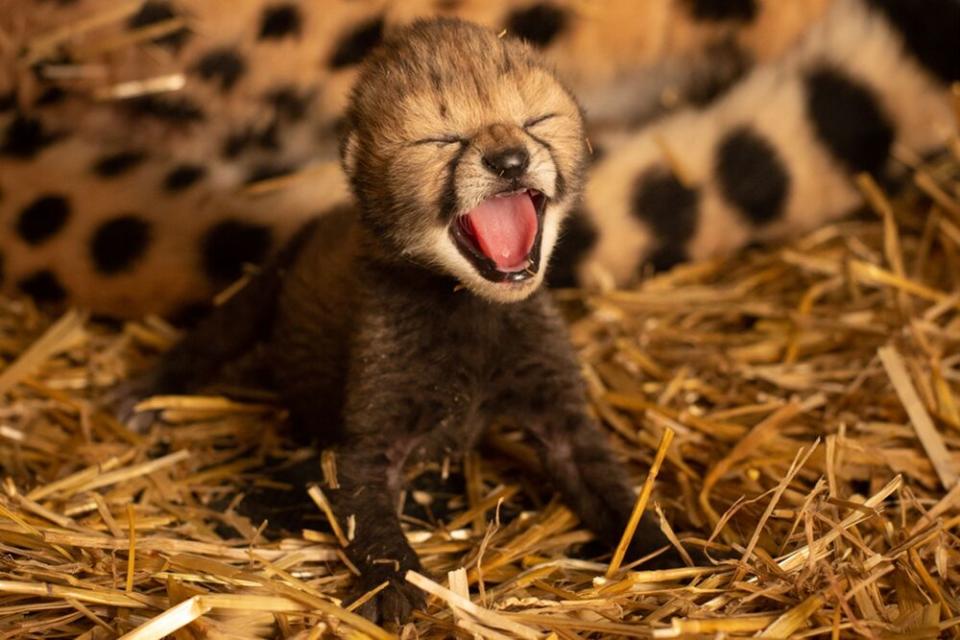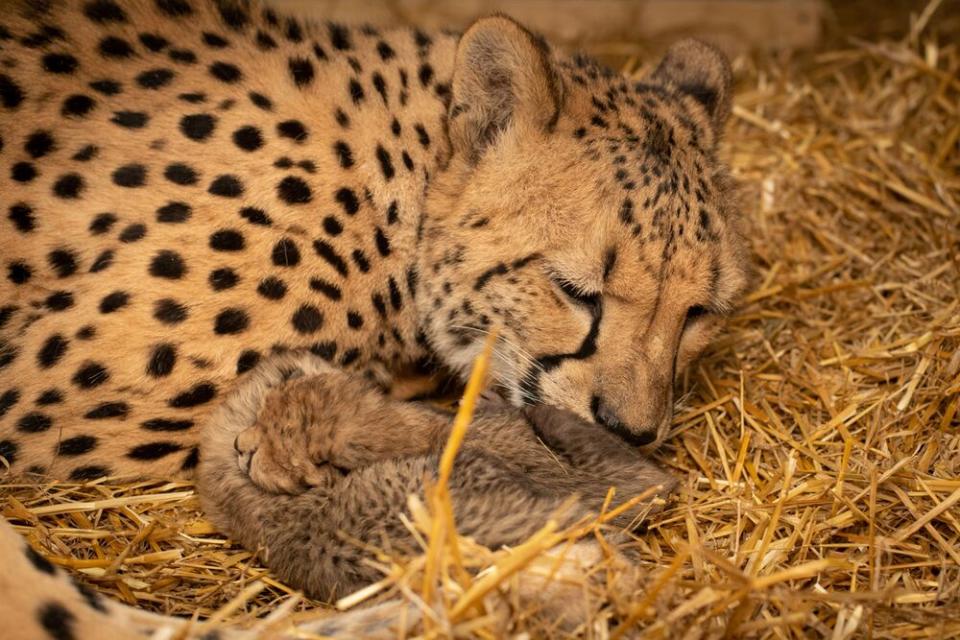Two Cheetah Cubs Born Via IVF for the First Time in a 'Ground-Breaking Procedure'

Scientists are celebrating the successful birth of two new cheetah cubs via in vitro fertilization (IVF) with a surrogate cheetah mom for the first time in history.
On Feb. 19, surrogate mother Izzy, a 3-year-old cheetah at the Columbus Zoo in Ohio, gave birth to the two cubs, one male, and one female, whose biological mom is 6 1/2-year-old Kibibi, the Smithsonian National Zoo said in a press release.
According to the zoo, scientists collected semen from a male cheetah living at Fossil Rim Wildlife Center in Texas last year and froze it. They then harvested eggs from Kibibi on Nov. 19, 2019, and fertilized them with the sperm.
“The fertilized embryos were then transferred to Izzy’s oviduct Nov. 21, 2019,” the zoo wrote. “It was only the third time scientists had ever attempted the procedure.”
“Kibibi had never given birth to a cub and is genetically valuable, but she is unlikely to ever reproduce on her own. Her valuable genes were at risk of never being passed on,” the National Zoo explained. “Izzy, the surrogate, is less genetically valuable and is not currently recommended to breed, but she was hand-raised as a cub and very comfortable with keepers, which made her a good candidate as a surrogate cheetah mom.”
RELATED: Cincinnati Zoo’s Nanny Dog Comes Out of Retirement to Care for Cheetah Cub

In December 2019, veterinarians at the Columbus Zoo observed the two fetuses on an ultrasound and Izzy was monitored closely during her pregnancy. Cheetah pregnancies typically only last between 90 and 96 days, according to the National Zoo.
She went into labor Wednesday, Feb. 19, with the two cubs being born at 9:50 p.m. and 10:20 p.m. local time.
While scientists have been studying IVF and embryo transfer in cheetahs for 15 years, but this was only the third attempt at the procedure.
“We have been performing artificial inseminations in cheetahs for decades, and there hasn’t been a cub born in almost 20 years,” Adrienne Crosier, a cheetah biologist at the Smithsonian Conservation Biology Institute.
“Just the fact that we were successful with embryo transfer after only the third attempt gives me hope for the future of this technique for improving cheetah management, potentially on a global scale,” she added. “This is a huge scientific breakthrough and, in many ways, is much better because it gives us much more flexibility with limited genetic material. This is an amazing milestone for cheetahs — we can extend a cheetah’s biological clock.”
RELATED VIDEO: Cheetah Jumps on Safari Vehicle
The National Zoo reports that in the last 50 years, cheetahs have become extinct in at least 13 countries, with only about 7,500 cheetahs remaining in the wild due to habitat destruction, hunting and other conflicts with humans.
Cheetahs are currently listed as vulnerable on the International Union for Conservation of Nature’s Red List. The IUCN reports there are only 6,673 left in the wild.

Scientists’ success with the IVF procedure gives many hope for the future of the species, as well as other endangered groups.
“For me, the birth of these IVF cubs is a significant breakthrough for cheetah reproduction, but the implications are enormous,” said Pierre Comizzoli, a reproductive biologist at the Smithsonian Conservation Biology Institute.
“We continue to improve our understanding of fertility and develop new tools for other species,” he added. “This is how we make rapid progress with rare and endangered species. One species’ breakthrough opens the door for another.”
Tom Stalf, President/CEO of the Columbus Zoo and Aquarium called the successful births a “groundbreaking procedure” and said that “the additional knowledge we gained throughout this process will serve as an important resource in the future, and we are proud to work with our zoological colleagues on perfecting innovative methods that ultimately can have a direct impact on protecting rare species like cheetahs.”

